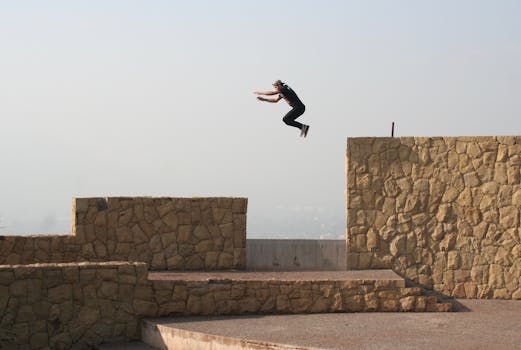Parkour: Acrobatic Movements and Overcoming Urban Obstacles
Parkour, often described as the art of movement, is a discipline that combines acrobatics, agility, and creativity to navigate urban environments. Originating in France in the late 20th century, parkour has evolved into a global phenomenon, attracting practitioners of all ages and backgrounds. This article explores the fundamentals of parkour, its benefits, and the challenges faced by practitioners as they overcome urban obstacles.
The Fundamentals of Parkour
At its core, parkour is about efficiently moving from one point to another, using only the body and the environment. Practitioners, known as traceurs (male) or traceuses (female), utilize a variety of techniques to overcome obstacles such as walls, railings, and gaps. The primary movements in parkour include:
- Vaults: Techniques used to clear obstacles, such as the speed vault and lazy vault.
- Jumps: Various types of jumps, including precision jumps and cat leaps, allow traceurs to navigate gaps.
- Rolls: Essential for safely landing from heights, rolls help dissipate impact.
- Climbs: Techniques for scaling walls or other vertical surfaces.
These movements require a combination of strength, flexibility, and spatial awareness. As practitioners develop their skills, they often create their own unique styles and approaches to movement.
The Benefits of Practicing Parkour
Engaging in parkour offers numerous physical and mental benefits. Some of the most notable advantages include:
- Physical Fitness: Parkour is a full-body workout that enhances strength, endurance, and flexibility.
- Improved Coordination: The dynamic movements involved in parkour help develop better balance and coordination.
- Problem-Solving Skills: Parkour encourages creative thinking as practitioners must find innovative ways to navigate obstacles.
- Confidence Building: Overcoming physical challenges boosts self-esteem and fosters a sense of accomplishment.
Moreover, parkour promotes a sense of community among practitioners. Many traceurs train together, sharing tips and techniques, which fosters camaraderie and support.
Challenges and Safety Considerations
While parkour is an exhilarating activity, it is not without its challenges and risks. Safety is a paramount concern for practitioners, especially when training in urban environments. Some common challenges include:
- Injury Risk: Falls and miscalculations can lead to injuries, making proper training and technique essential.
- Legal Issues: Practicing parkour in public spaces can sometimes lead to confrontations with property owners or law enforcement.
- Environmental Hazards: Urban settings may contain hidden dangers, such as broken glass or unstable surfaces.
To mitigate these risks, many practitioners emphasize the importance of training in safe environments, such as parks or designated training facilities. Additionally, learning from experienced instructors can help newcomers develop proper techniques and safety protocols.
Case Studies: Parkour in Action
Several notable examples illustrate the impact of parkour on individuals and communities. One such case is the “Yamakasi,” a group of French traceurs who popularized parkour in the late 1990s. Their story was depicted in the film “District 13,” which showcased their incredible skills and the philosophy behind parkour.
Another example is the rise of parkour training facilities, such as “Parkour Generations” in the UK, which offers classes and workshops for all skill levels. These facilities provide a safe space for practitioners to learn and hone their skills while fostering a supportive community.
Conclusion: The Art of Movement
Parkour is more than just a physical activity; it is a way of life that encourages creativity, resilience, and community. As practitioners navigate urban obstacles, they not only enhance their physical abilities but also develop valuable life skills. While challenges and risks exist, the rewards of practicing parkour—both physical and mental—are significant. As this discipline continues to grow in popularity, it inspires individuals to see their environments in new ways and embrace the art of movement.
